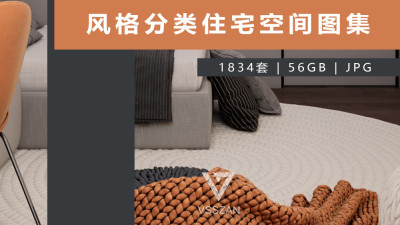 Associate Director Jessica Smith with Directors Stephen Feeke and Madeleine Bessborough
Associate Director Jessica Smith with Directors Stephen Feeke and Madeleine Bessborough
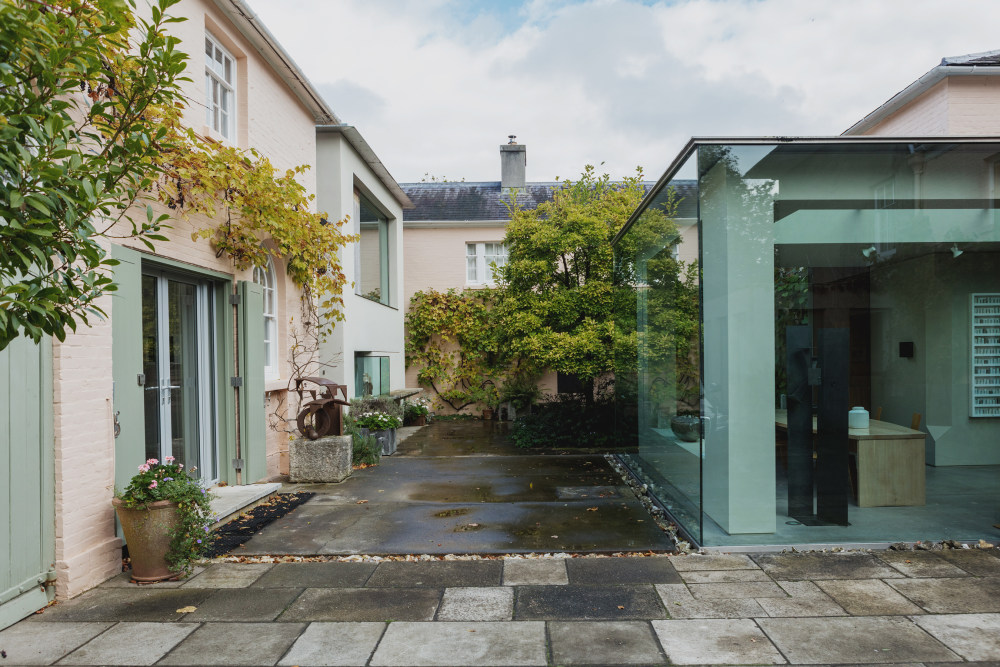 Artists House in the context of the New Art Centre, Roche Court
Artists House in the context of the New Art Centre, Roche Court
 Artists House interior with a sculpture by Hubert Dalwood
Artists House interior with a sculpture by Hubert Dalwood
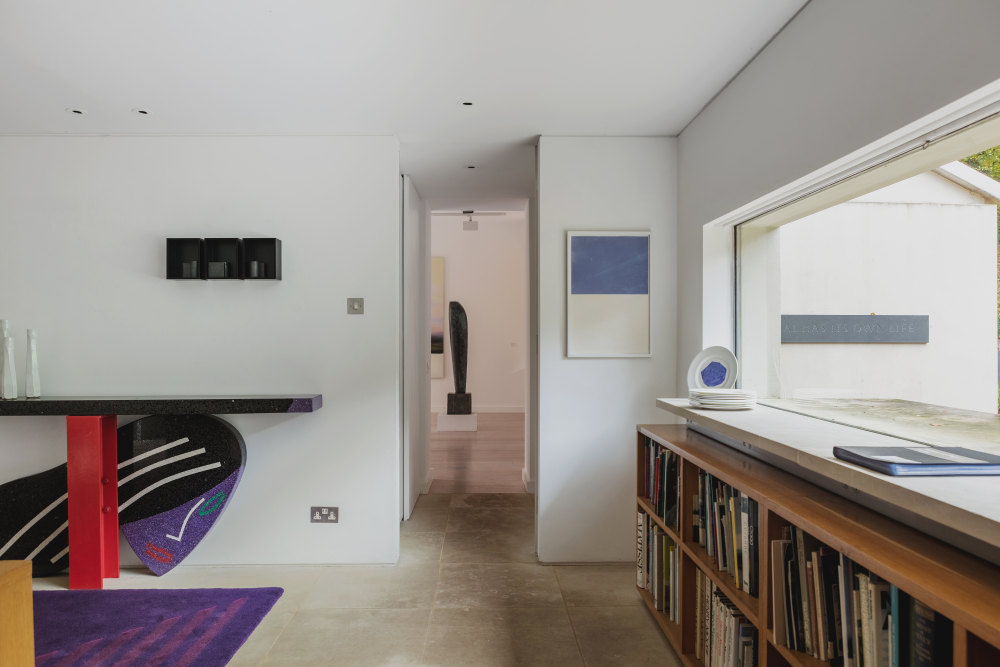 Artists House interior with 'Terrazzo and Steel' table by Bruce McLean
Artists House interior with 'Terrazzo and Steel' table by Bruce McLean
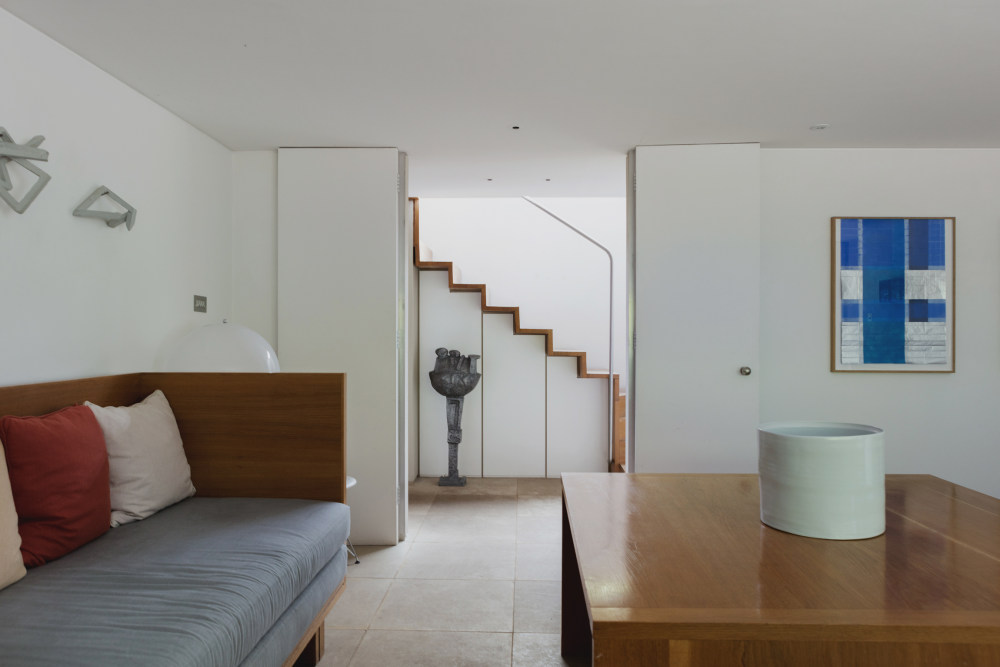 Artists House interior with a sculpture by Hubert Dalwood and collage by Jyll Bradley
Artists House interior with a sculpture by Hubert Dalwood and collage by Jyll Bradley
 Bathroom with 'One Thing Leads to Another' by Nao Matsunaga
Bathroom with 'One Thing Leads to Another' by Nao Matsunaga
 Artists House interior with 'Blue Moon Ladder' and other works by Nao Matsunaga
Artists House interior with 'Blue Moon Ladder' and other works by Nao Matsunaga
 Cube Gallery interior with work by Edmund de Waal
Cube Gallery interior with work by Edmund de Waal
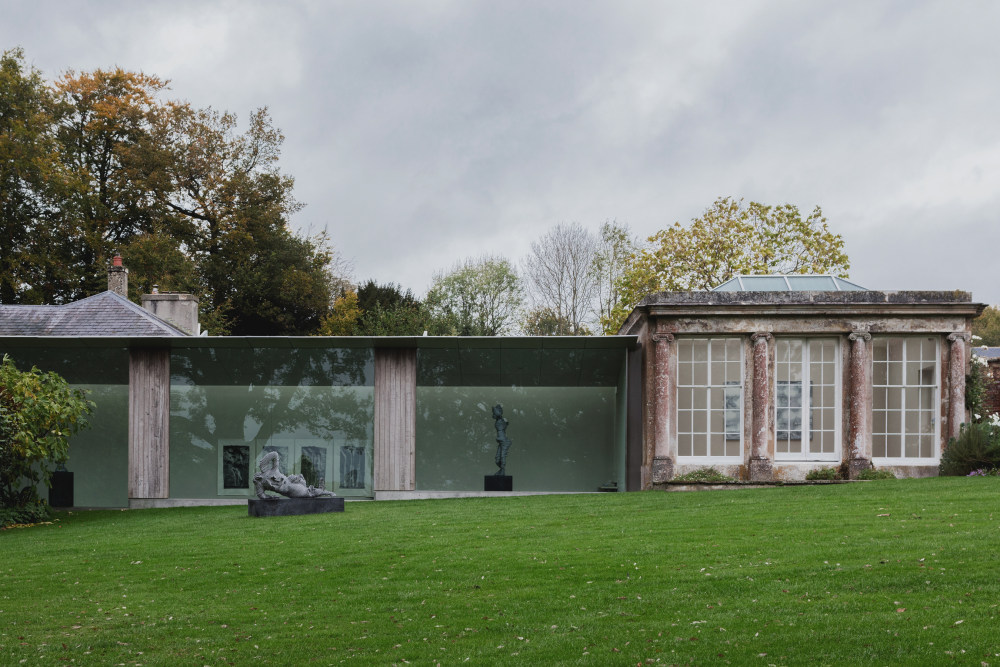 Gallery leading to the Orangery with works by Toby Ziegler
Gallery leading to the Orangery with works by Toby Ziegler
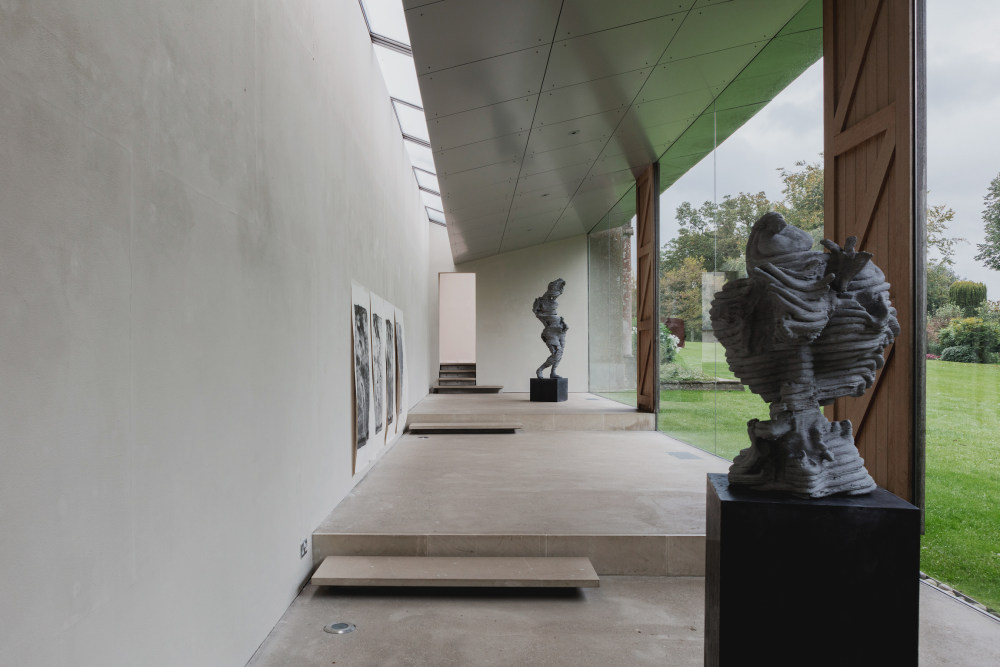 Gallery interior with works by Toby Ziegler
Gallery interior with works by Toby Ziegler
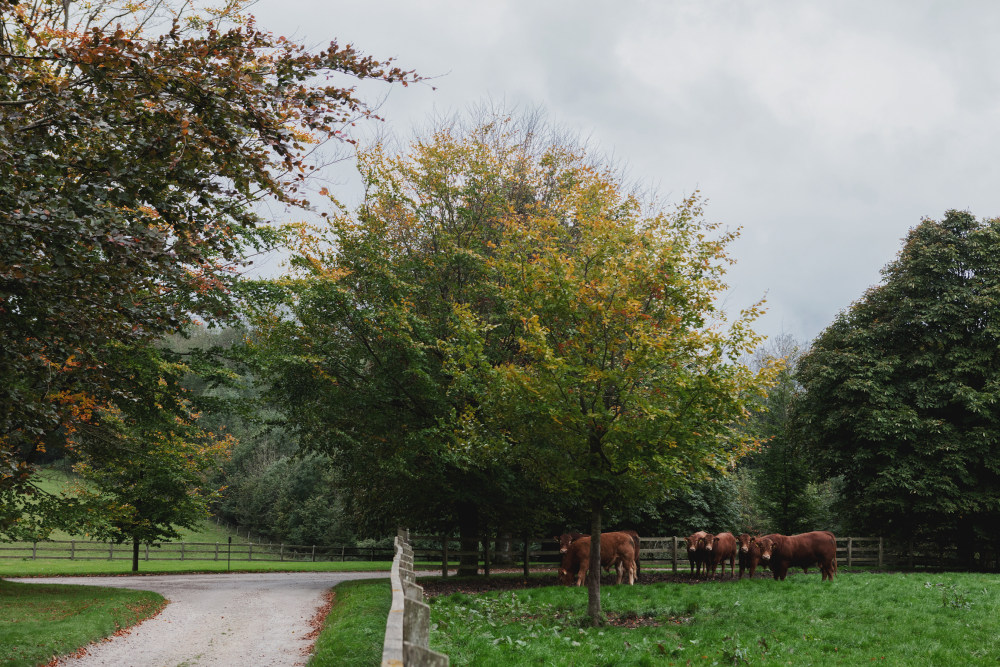 Cattle in the grounds of Roche Court
Cattle in the grounds of Roche Court
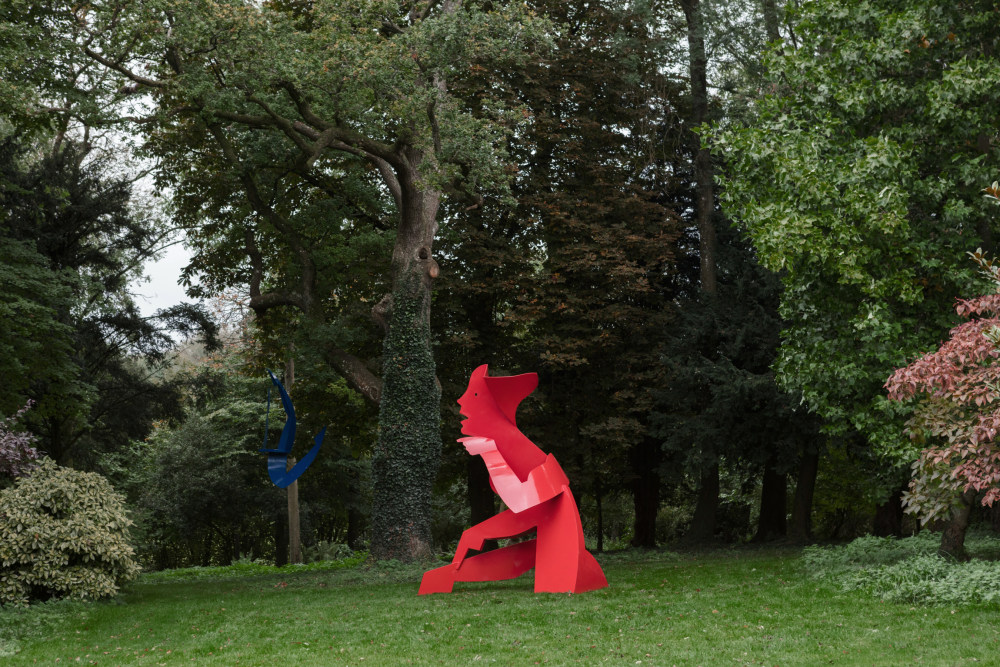 'Femme Assise' by Allen Jones in the grounds of Roche Court
'Femme Assise' by Allen Jones in the grounds of Roche Court
As the New Art Centre at Roche Court prepares to celebrate its 60th anniversary next year, we had the unusual opportunity of interviewing Associate Director Jessica Smith about the remarkable Artists House. The House is one of three exhibition spaces in the contemporary sculpture park and was imagined as a home for visiting artists.
Jessica Smith: “I first came here in the autumn of 2016 and I was just blown away. It is set in a really rural location and you cannot get mobile phone signal here for love nor money – but it’s an incredibly special place.
“The gallery was originally founded in London in 1958 by Madeleine Bessborough to support contemporary young artists. It moved out to Roche Court in the early 1990s and became one of the first sculpture parks of its kind in the UK. Stephen Feeke is the other Director here and plans the programme in the main gallery, Artists House and the sculpture park as a whole.
The site is a working farm so there are sculptures all over the grounds with cattle grazing around major pieces by Anthony Caro, Barry Flanagan and Christopher Le Brun.
“Originally the house was intended for artist residencies. The sofa turns into a bed, there are chairs and carpets, a credenza that conceals a cooker and a sink, a hidden bathroom – it is very much a domestic space that feels like a home.
“In many ways it follows the model of Kettle’s Yard in Cambridge. The founder there was the collector and curator, Jim Ede, and in the mid-1950s he would open his house for students and interested guests. The house was filled with works by Ben Nicholson, Barbara Hepworth, Alfred Wallis and Lucie Rie. It was a chance to see art and design in a really relaxed and informal environment and Artists House emulates that.
“Art can be intimidating in a traditional gallery or museum context. This is a way to show what it can be like to actually live with contemporary painting and sculpture. Its a very a different experience to the ‘white cube’. It encourages a quieter, more personal connection with the work, and often with quite difficult work such as Phyllida Barlow Pom Poms, wooden structures by Joseph Walsh and vessels by Edmund de Waal. I particularly love Nao Matsunaga’s giant ‘Blue Moon Ladder that appears to be held together with blue glaze.
The house was designed by the architect Stephen Marshall. He first worked with Madeleine in 1998 when he designed the Gallery that links the main Georgian house and the Regency Orangery. He was a young architecture student at the time, just starting out, but the design was awarded the RIBA Stephen Lawrence Prize for small project of the year. Building on its success, Madeleine was confident that she could do other contemporary architectural projects with Stephen that harmonised with the site, and she commissioned Artists House two years later.
“Stephen has now designed three very modern elements that are interwoven with Roche Court. The main house is listed, as it was built as the intended retirement home of Admiral Nelson, but the contemporary projects work in harmony with the surrounding buildings. They enhance the setting and the natural landscape. In the context of the Gallery, the floating roof mirrors the pitch of the main house while the giant timber doors reference the columns that can be seen in the Orangery. They also act as the key structural supports and allow access out to the garden.
The buildings developed out of the vocabulary of the existing architecture and work functionally as well as aesthetically. The expanses of glass fill the spaces with light and the oak is soft and warm. The buildings have a connection to the landscape that allows the works to breathe and converse with the natural environment and changing seasons.
“The Artists House has shown such a lot of artists work over the years, but one of the new focuses is to show more design alongside sculpture, painting and photography. The house lends itself to displaying art and design that works in dialogue together, so we’re looking to extend our support and are open to design proposals. Bruce McLean’s ‘Terrazzo and Steel table with the profile of a womans face is a perfect example. It’s a functional artwork that embraces the idea that you can place things on it and above it – it is meant to be lived with.
“We’re a commercial gallery so all of the work is for sale, but the plan is to use the space to show more work to more people.
How do you define modern living?
This environment shows how you can live with contemporary art and design in your home.
What would you miss most about the space?
The light, it’s hard to describe.
Are there any properties on The Modern House that have particularly caught your eye over the years?
It would be hard for me to pick! I love the Ty Hedfan Holiday Let in Wales, but I also like Barnhouse in Highgate, that’s an extraordinary space.
Read more:
Collected: Art with ‘Frieze Editorial Director Jennifer Higgie
Subscribe to our newsletter for more original interviews, inspiring interiors and exclusive offers.
- 转载自:The Modern House
- 语言:English
- 阅读原文
|

 发表于 2020-8-4 03:50:37
发表于 2020-8-4 03:50:37















